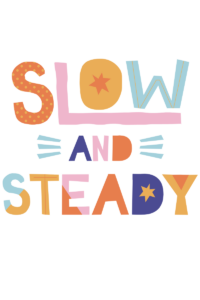This information about Dr. Seuss was hiding in plain sight. And I, like many other educators, was not aware of this. But trust me if you Google it comes right up.
I almost couldn’t believe it. Throughout my elementary teaching career, I have read countless Dr. Suess books, the students in my class, and even to my own children.
You get a twang of guilt, feeling like you should know better. But how would you know? Dr. Seuss’s day has become a full-blown holiday in schools all around America. You could argue that it has become another marketing or sales.
NEA (National Education Association) was provided with “numerous examples of why using Seuss as the face of Read Across America was problematic.” The suggestion was made to promote more diverse authors. “NEA took the critique to heart and began implementing the recommendations, a process made easier by the expiration of its permission to use the Cat in the Hat logo on Aug. 31, 2019. Additionally, the union may no longer use Seuss character costumes to promote the event unless they are purchased from retail outlets.” -Mike Antonucci’s Union Report
They will no longer include him in their literacy calendar for Read Across America. Their new theme? “Celebrate a nation of diverse readers.”
With this being a big move for NEA and the impact it has for Read Across America, it’s a surprise that it remains a holiday celebration for many schools. March had Instagram, and Facebook flooded with Dr. Seuss celebration. But not everyone joined in the celebration. I was recently at a school that was preparing for Read Across America celebrations, and the teacher leader had mentioned that they chose to remove Dr. Seuss Day. They took purposeful action to make it a multi-cultural event. Which leads to my question is it that schools are unaware, or that schools are choosing to look away?

What Proves He Was Racist?
If it’s news to you that Dr. Seuss was racist, let me share what information has been made public. Before and during his career publishing books, Dr. Seuss published hundreds of racist political cartoons, comics, and ads. Scholars have also analyzed his books and identified racism in his illustrations and character development. Some of the themes identified were:
-black people depicted as monkeys
-incited mass incarceration and killing of Japanese
-dehumanizing other marginalized groups that include Jewish people and Muslims
On the flip side of this, many people state that Horton Hears a Who! And Sneetches ( books that promote tolerance) were Dr. Seuss’s apology for his WWII anti-Japanese propaganda. That he evolved, and his racist views and mentality changed as he got older.

What Effect Does This Have On Our Youth?
Children’s books provide impressions and messages that can last a lifetime and shape how children see and understand themselves, their homes, communities, and the world (Santora).
“By age six, White North American children have already developed a pro-White/anti-Black bias” (Baron and Banaji). “When exposed to racism and prejudice at this age, they tend to embrace and accept it, even though they might not understand the feelings.” (Burnett).
Far too many children’s books center around “Whiteness” and stereotype or dehumanize people of color or other oppressed groups. These prejudices have infected children’s literature since the age of time. Here’s what we should reflect on, are we going to do anything about it?

Opinions From The Masses
There are two camps here with polar opposite opinions on what our next steps should be.
One side promotes never buying or reading his books again. They have made a firm decision to ban all the books or exclude individual books from their libraries. This decision was made in order not to encourage systemic racism and discrimination in our education system.
The other side feels that it is extreme to ban all Dr.Seuss, and we’re igniting “cancel culture.” Cancel culture is a form of a boycott in which a person who has had behavior in their past that is perceived as offensive, are entirely boycotted. They state that book banning is us trying to rewrite history. Their other argument is that his books aren’t racist, just his political cartoons and that he grew and changed as he got older. At some point, he became anti-nazi.
They are right people do change. People do evolve. But by keeping his books, are we allowing racism and discrimination to stay embedded in our culture? We could debate this endlessly. But it at the very least should be a discussion.

So What Do We Do?
One argument I read as I was doing some research on this is that his books are classics. We keep labeling things as “classics’ ‘. I don’t know if we all realize that that’s not always a good thing. I get it it was a different time. But aren’t there a lot of things from different times that still affect us when they are passed down from generation to generation?
So here’s our chance to reflect and decide how do we want to move forward. Can this holiday move away from Dr. Seuss and instead focus on motivating children to read more culturally diverse books. Can we find some inclusive books as an alternative?
I’m not here to convince you one way or another. I want to ensure that you are asking yourself two questions.
First, are your libraries filled with books about people of color and ignored or marginalized groups of people. And second, are you being intentional and strategic when choosing a text.
If you’re unsure of how to branch out to other types of cultures and the literature, check out a list of recommended books by the National Education Association (NEA) that I have in my free resources. So I ask you do we need one cat in a hat to inspire the love of reading. Imagine using authors that depict a student’s culture.
Book: Was the Cat in the Hat Black?: The Hidden Racism of Children’s Literature, and the Need for Diverse Books by Philip Nel
https://zennedmath.com/why-math-read-alouds-may-be-the-game-changer-you-need/
https://www.readacrossamerica.org/recommended-books/
https://sophia.stkate.edu/cgi/viewcontent.cgi?article=1050&context=rdyl
https://www.pragmaticmom.com/2016/04/dr-seuss-racist/
Want to check out more?
MEMBERSHIP SITE:
https://zennedmath.com/online-courses/
FACEBOOK GROUP: Zenned Math Teachers
https://www.facebook.com/groups/zennedmathteachers/
YOUTUBE CHANNEL: Zenned Math
https://www.youtube.com/channel/UC5njH_5LoK6G67BvZecGfnw?
WANT ME IN YOUR INBOX? Sign up for my newsletter
https://view.flodesk.com/pages/5efc876dcaabca0028b95eb5
DISCLAIMER: Some links included in this blog might be affiliate links. If you purchase a product or service with the links that I provide, I may receive a small commission. There is no additional charge to you!

